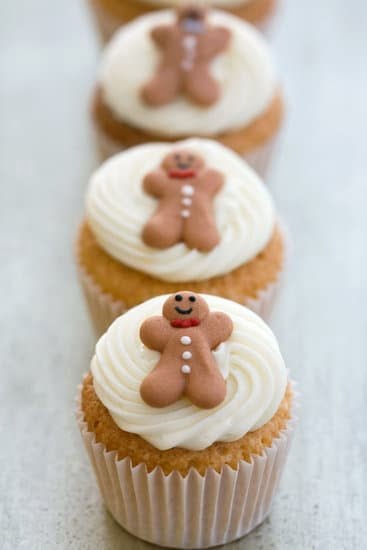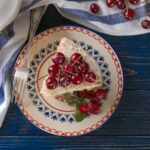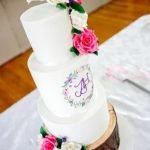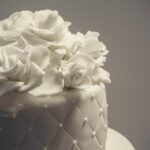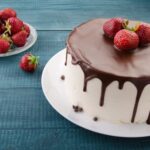Buttercream frosting is a versatile and delicious way to decorate cakes, and in this article, we will explore how to decorate a cake with buttercream frosting. Buttercream frosting is a classic choice for cake decorating, known for its creamy texture and ability to hold intricate designs.
There are different types of buttercream frostings, such as American, Swiss, Italian, and French, each with its own unique characteristics. One of the reasons why buttercream frosting is great for cake decorating is its versatility – it can be flavored and colored in endless ways to suit any occasion or theme.
To begin decorating a cake with buttercream frosting, there are essential tools and ingredients that you will need. From piping bags and tips to an offset spatula, these tools are crucial for achieving professional-looking cake decorations. Additionally, key ingredients like butter, powdered sugar, and vanilla extract play a vital role in creating the perfect consistency and flavor for your buttercream frosting.
Before diving into the art of decorating with buttercream frosting, it’s important to prepare the cake properly. This includes baking and cooling the perfect cake, as well as leveling and trimming it for decorating purposes. These foundational steps lay the groundwork for beautifully decorated cakes using buttercream frosting techniques that we will delve into later in this article.
Essential Tools and Ingredients
When it comes to decorating a cake with buttercream frosting, having the right tools and ingredients is essential for achieving a beautiful and professional-looking result. Some of the key tools you will need include piping bags, tips, an offset spatula, and a turntable.
Piping bags are essential for creating intricate designs and frosting the cake, while tips come in various shapes and sizes to achieve different decorative effects. An offset spatula is perfect for spreading the frosting evenly on the cake, and a turntable makes it easier to apply the frosting from all angles.
In addition to the tools, understanding the key ingredients for buttercream frosting is crucial. Typically, buttercream frosting consists of butter, powdered sugar, vanilla extract, and a pinch of salt. The ratio of butter to sugar will determine the sweetness and consistency of the frosting.
Using high-quality butter and pure vanilla extract can significantly enhance the flavor of the frosting. It’s important to have these ingredients in the correct proportions to achieve a smooth and creamy texture that holds its shape when decorating.
As you gather your tools and ingredients, keep in mind that practicing with them will improve your skills over time. Experimenting with different piping tips and mastering the art of handling an offset spatula will ultimately lead to more refined cake decorations. With patience and practice, you’ll be able to create stunning designs on your cakes using buttercream frosting.
| Tools | Ingredients |
|---|---|
| Piping bags | Butter |
| Tips | Powdered sugar |
| Offset spatula | Vanilla extract |
| Turntable | Salt |
Preparing the Cake
Before you can start decorating your cake with buttercream frosting, it’s important to ensure that the cake itself is prepared properly. One of the first things you’ll want to do is bake and cool the perfect cake. This means following a reliable recipe, using high-quality ingredients, and paying attention to baking times and temperatures. Once the cake is baked, make sure to let it cool completely before attempting to decorate it.
After your cake has cooled, you’ll want to level and trim it in preparation for decorating. This step ensures that your cake has an even surface for frosting and will result in a more professional-looking finished product. You can use a long serrated knife or a specialized cake leveler tool to carefully trim off any uneven or domed sections of the cake.
Now that your cake is baked, cooled, leveled, and trimmed, it’s ready for the next steps in the decorating process.
| Tools Needed | Key Ingredients |
|---|---|
| Piping bags | Butter |
| Tips (various sizes and designs) | Powdered sugar |
| Offset spatula | Vanilla extract |
Making Buttercream Frosting
Recipe for American Buttercream
To make American buttercream frosting, you will need one cup of unsalted butter (at room temperature), four cups of powdered sugar, a teaspoon of vanilla extract, and two to four tablespoons of heavy cream or milk. In a large mixing bowl, beat the softened butter until creamy. Gradually add powdered sugar and beat until well combined. Add vanilla extract and heavy cream or milk and beat until smooth and fluffy.
Tips for Consistency and Flavor
The key to making perfect buttercream frosting is achieving the right consistency and flavor. If your frosting is too thick, you can add more cream or milk to thin it out. On the other hand, if it’s too thin, simply add more powdered sugar until you reach the desired consistency. You can also experiment with different flavorings such as cocoa powder for chocolate buttercream or fruit puree for a fruity twist.
Adding Flavor Options
In addition to basic vanilla-flavored buttercream, there are countless other flavor options you can explore. For a chocolate lover’s dream, mix in some melted chocolate or cocoa powder. If you’re looking for something more unique, try adding citrus zest or extracts like almond or coconut. With just a little creativity and experimentation, you can create a variety of deliciously flavored buttercream frostings to suit any cake theme or taste preference.
Following these simple tips and insights on how to decorate a cake with buttercream frosting can elevate your cake decorating skills to new heights. Whether you’re just starting out or looking to enhance your existing knowledge, mastering the art of working with buttercream frosting opens up endless creative possibilities for crafting beautiful and delicious cakes.
Coloring and Flavoring the Buttercream
When it comes to decorating a cake with buttercream frosting, adding color and flavor to the buttercream can take your creation to the next level. Whether you want a bright and colorful design or a deliciously flavored frosting, there are several techniques you can use to achieve the perfect look and taste for your cake.
Techniques for Adding Color
One popular way of coloring buttercream is by using gel food coloring. Gel food coloring provides vibrant colors without altering the consistency of the frosting. To achieve a smooth and even color, start by adding a small amount of gel food coloring to your buttercream and then mix it in thoroughly. You can always add more color if needed, but it’s best to start with a little and gradually increase until you reach your desired shade.
Another method for adding color is by using natural ingredients such as fruit purees or freeze-dried fruit powder. For example, adding raspberry puree or powder will give your buttercream a beautiful pink hue while also infusing it with a delicious fruity flavor. Just be sure to adjust the amount of liquid or dry ingredients in your recipe to compensate for the addition of these natural colorants.
Ideas for Flavoring
When it comes to flavoring buttercream frosting, there are endless possibilities. From classic vanilla and chocolate flavors to unique options like coconut or coffee, you can customize your buttercream to suit any taste preference.
To add flavor to your buttercream, simply incorporate extracts or other flavorings into the frosting while mixing. For example, if you want to make chocolate-flavored buttercream, add cocoa powder and some extra liquid (such as milk or heavy cream) into your recipe. Alternatively, you can experiment with different extracts like almond, mint, or lemon for a more subtle yet delightful taste.
By mastering these coloring and flavoring techniques, you can create visually stunning and mouthwateringly delicious cakes that are sure to impress any crowd.
Basic Decorating Techniques
When it comes to decorating a cake with buttercream frosting, there are a few basic techniques that every aspiring baker should master. These techniques will help you create a smooth and professional-looking finish on your cakes. Here are some step-by-step instructions for crumb coating the cake:
- Bake your cake and allow it to cool completely before starting to decorate.
- Prepare a batch of buttercream frosting according to your preferred recipe.
- Place a dollop of frosting on your cake stand or serving plate to prevent the cake from sliding around.
- Place the first layer of cake on the stand or plate and top it with a generous amount of frosting, spreading it evenly with an offset spatula.
- Add the next layer of cake and repeat the process until all layers are stacked and frosted. This step creates a crumb coat that seals in any loose crumbs before adding the final layer of frosting.
Once your cake is crumb coated, you can move on to learning how to properly fill a piping bag and use different tips for decorating. This allows you to add decorative elements such as borders, lettering, and simple designs to your cake. With practice, you’ll be able to create beautifully decorated cakes that are sure to impress your family and friends.
Remember, mastering these basic decorating techniques takes time and practice. Don’t be discouraged if your first attempts don’t turn out exactly as you’d hoped. With perseverance and patience, you’ll soon discover how fun and rewarding it can be to decorate a cake with buttercream frosting.
Advanced Decorating Techniques
One of the most impressive ways to decorate a cake with buttercream frosting is by creating beautiful buttercream flowers and rosettes. These delicate designs add a touch of elegance and can turn any simple cake into a work of art. To create buttercream flowers, you will need a piping bag fitted with a petal tip or a round tip, as well as a steady hand and some patience.
To make buttercream flowers, start by piping a small blob of frosting in the center of the flower nail or directly onto the cake. Then, gently squeeze the piping bag while moving your hand in a circular motion to create the petals.
For rosettes, simply pipe small swirls of frosting on the cake, starting from the center and working your way outwards in a spiral motion. With practice and patience, you can create stunning buttercream floral designs that will impress your friends and family.
Using Stencils and Other Decorative Elements for Intricate Designs
Another advanced decorating technique for cakes with buttercream frosting is using stencils and other decorative elements to create intricate designs. Stencils are great for adding patterns and shapes to your cake decorations without having to freehand them. Simply place the stencil on the frosted cake, then use an offset spatula or a palette knife to spread frosting over the stencil openings. Carefully lift the stencil off the cake to reveal your beautifully detailed design.
In addition to stencils, you can also use edible embellishments such as fondant cutouts, sugar flowers, edible pearls, or metallic dragees to add texture and visual interest to your cake decorations. These decorative elements can be used sparingly or layered for a more elaborate look. Whether you’re creating a simple yet elegant design or an intricate masterpiece, using stencils and decorative elements is a sure way to elevate your buttercream-frosted cakes.
- Create buttercream flowers by piping small blobs of frosting in circular motions
- Use stencils to add intricate patterns and shapes to your cake decorations
- Enhance your designs with edible embellishments like fondant cutouts and sugar flowers
Troubleshooting and Tips
When it comes to decorating a cake with buttercream frosting, there are some common issues that may arise. One of the most frequent problems is the buttercream being too runny or too stiff, which can make it difficult to work with.
If your buttercream is too runny, try adding more powdered sugar gradually until you reach the desired consistency. On the other hand, if your buttercream is too stiff, you can add a small amount of milk or cream to loosen it up.
Another common problem when decorating a cake with buttercream frosting is air bubbles in the frosting, which can affect the smoothness of the final finish. To avoid this issue, make sure to mix the buttercream on low speed after adding powdered sugar to minimize air incorporation. Additionally, gently tapping the filled piping bag on the counter before decorating can help release any trapped air.
For those looking to achieve professional-looking cake decorations with buttercream frosting, here are some pro tips to keep in mind. First, always ensure that your cake layers are completely cooled before applying the buttercream to prevent any melting or sliding. Secondly, using a turntable can make it much easier to apply an even layer of frosting and create smooth finishes on the sides of the cake.
Lastly, storing and transporting a cake decorated with buttercream frosting requires special attention to maintain its appearance and texture. It is best to store a frosted cake in the refrigerator but allow it to come back up to room temperature before serving for optimal taste and texture.
By taking these troubleshooting tips into account and implementing pro techniques for decorating cakes with buttercream frosting, anyone can achieve beautiful results worthy of a bakery display. With practice and patience, even beginners can master the art of creating stunning cake decorations using this versatile and delicious frosting.
Conclusion
In conclusion, learning how to decorate a cake with buttercream frosting can open up a world of creative possibilities for both beginner and experienced bakers alike. The versatility of buttercream frosting, combined with the right tools and techniques, allows for endless opportunities to create beautiful and delicious works of art. From simple swirls and rosettes to more intricate designs and patterns, mastering buttercream frosting can truly elevate the presentation of any cake.
The key to successful cake decorating with buttercream frosting lies not only in knowing the essential tools and ingredients required but also in understanding the proper techniques for preparing the cake, making the frosting, and executing different decorating styles. By following the step-by-step instructions provided in this article, individuals can gain the confidence and skills needed to take their cake decorating abilities to the next level.
As readers delve into their own cake decorating adventures, it’s important to remember that practice makes perfect. Don’t be discouraged by initial attempts-experimenting with coloring, flavoring, basic and advanced decorating techniques is all part of the fun.
With patience and persistence, anyone can become proficient in creating stunning buttercream-frosted cakes that are sure to impress friends, family, or clients. So go ahead and channel your inner pastry chef as you embark on your journey to mastering the art of decorating cakes with buttercream frosting.
Frequently Asked Questions
How Do You Decorate a Cake With Buttercream for Beginners?
Decorating a cake with buttercream for beginners involves starting with a crumb coat to seal in the crumbs and then applying a thicker layer of buttercream. Use different piping tips to create various designs, from simple borders to intricate flowers. Practice and patience will help improve your skills.
How Do You Ice a Cake With Buttercream Frosting?
To ice a cake with buttercream frosting, start by placing a dollop of frosting on the cake board to secure the cake in place. Apply a thin layer of frosting, known as a crumb coat, before adding a thicker layer of frosting. Finally, use an offset spatula or bench scraper to smooth out the frosting for a polished finish.
What Is the Trick to Buttercream Frosting?
The trick to buttercream frosting is using the right ratio of ingredients – butter, powdered sugar, and flavorings – to achieve the desired consistency. It’s also important to whip the butter until it’s pale and fluffy before gradually adding in the powdered sugar.
Adding small amounts of liquid (such as milk or cream) can help adjust the consistency of the frosting as needed.

Welcome to our cake decorating blog! My name is Destiny Flores, and I am the proud owner of a cake decorating business named Cake Karma. Our mission is to provide delicious, beautiful cakes for all occasions. We specialize in creating custom cakes that are tailored specifically to each customer’s individual needs and tastes.

